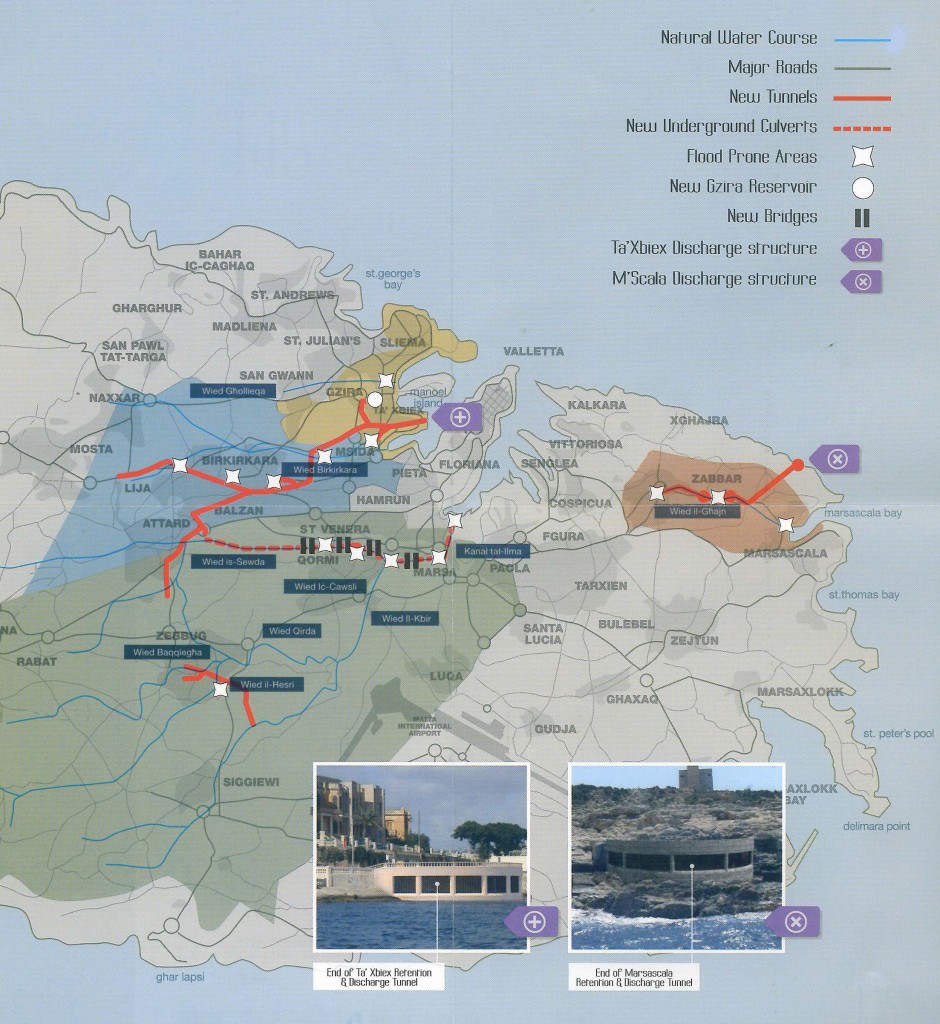
The longest tunnel will be an 11km (7mi) long, 5m (16ft) high, 5.5m (18ft) wide tunnel draining the localities of Attard, Birkirkara, Msida, Lija, Balzan and Gżira, running from the Balzan/Attard area passing through Birkirkara to Ta Xbiex, where most of the stormwater will be discharged into the sea at an outflow rate of 65 cubic metres (17 171 gallons) per second. There will be six main shafts strategically located near the main tunnel to serve as access points during construction and operation of the project. A soak-away reservoir with a capacity of about 10,000 cubic metres (2.64m gallons) has been built in Gżira and an application is still pending to turn its surface area into a car park. The reservoir is designed to allow water to percolate into aquifers, providing them with much-needed replenishment.
A further tunnel will be dug under Gżira to discharge water from the San Gwann area into the sea at Ta’ Xbiex. The Zebbug phase of the project will include a 1.6km (1mi) tunnel that will discharge stormwater at Wied Qirda.
The amount of stormwater to be discharged into the sea has been questioned in the light of water shortages on the island, but the cost of ‘scrubbing’ stormwater to make it suitable for household use makes this option prohibitively expensive.
Manuel Sapiano from Malta’s Ministry for Energy and Water Conservation said in May 2013 that Malta has an annual average rainfall of 550mm (21.6”), “the lowest of all Mediterranean islands except for Cyprus (500mm / 19.7”). The cost of water on Malta is also the highest (alongside Cyprus)”.
As a result of competition for subterranean space in urban areas between basements for parking, storage areas and utilities, water cisterns have long been converted or omitted and it is this very lack of water storage space that is leading to both flooding and water shortages.
Ironically, it has been a legal requirement since the times of the Knights of the Order of St John, in the Middle Ages, that each building have a cistern in which to store rainwater. But this requirement has been largely unenforced for the last 50 years, until 2009, when it again became mandatory to provide rainwater storage in order to obtain certification for the energy performance of new buildings.
Sources: Malta Today; Times of Malta; ANSA Med; Malta Investment; Sandvik
Related
Source link : https://floodlist.com/europe/malta-flood-tunnel
Author :
Publish date : 2014-02-07 08:00:00
Copyright for syndicated content belongs to the linked Source.